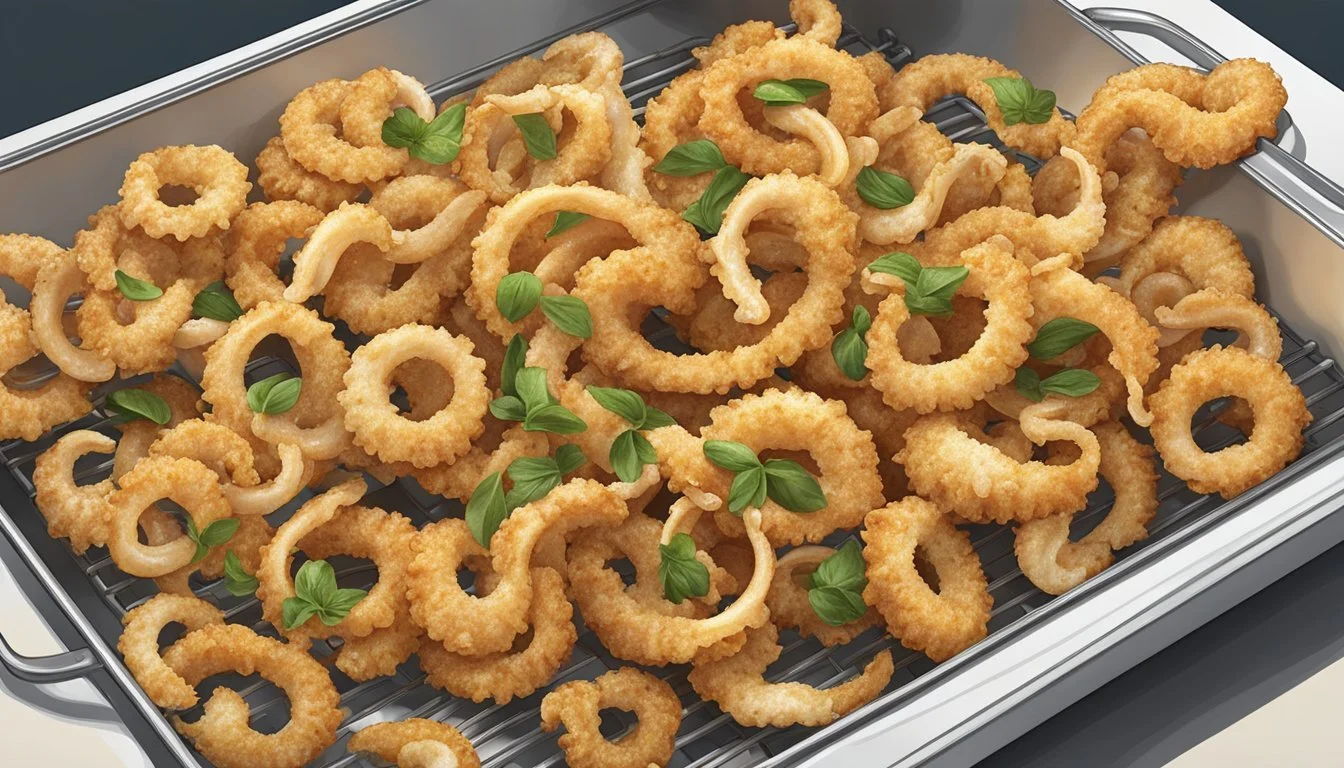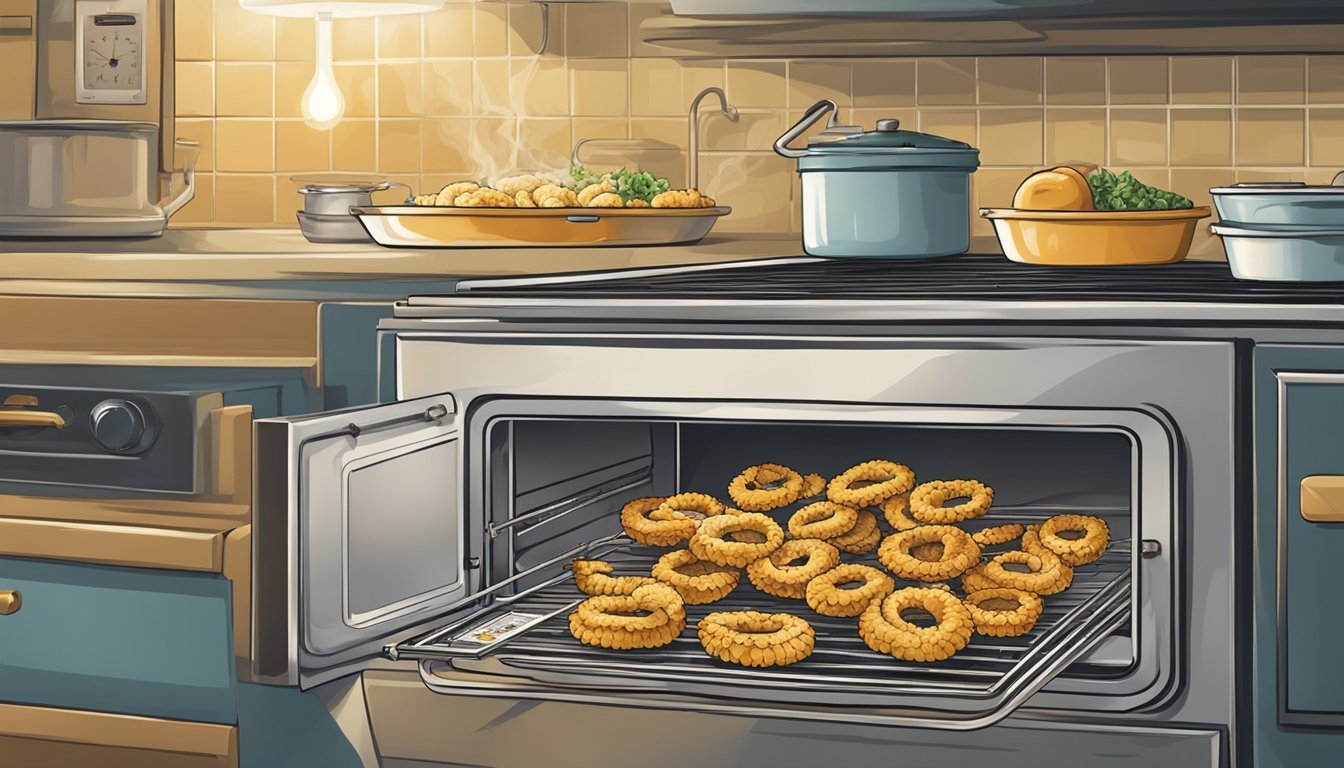Best Way to Reheat Calamari Fritti
Secrets to Reviving the Crunch
Calamari fritti, with its delicate texture and satisfying crunch, is a widely enjoyed appetizer. However, maintaining its crispy exterior when reheating can prove challenging. As seafood lovers know, the tender squid rings are best savored when they're fresh out of the fryer, enveloped in a light, golden crust. Achieving that same crunch on day two demands a careful reheating method that restores the crispiness without drying out the delicate squid.
The key to successful reheating lies in both the chosen method and the execution. Ovens and air fryers are preferred for their ability to circulate hot air around the calamari, mimicking the initial cooking process that gives it its signature texture. While microwaves may seem like a quick fix, they are prone to producing soggy calamari due to their method of heating. By utilizing tools that offer consistent heat and employing techniques that promote even air flow, one can come close to reviving the calamari's original allure.
The process also involves attention to detail, such as preheating the appliance, arranging the calamari in a single layer to facilitate even reheating, and potentially using a light coat of oil to encourage crispiness. These steps collectively contribute to achieving the desired texture, ensuring that reheated calamari fritti is almost as enjoyable as when it was freshly prepared.
Understanding Calamari
Calamari, often enjoyed for its delicate balance of flavor and texture, faces the challenge of maintaining its quality upon reheating. Properly handling and reheating are essential to preserving its distinctive characteristics.
Characteristics of Properly Cooked Calamari
Properly cooked calamari should have a crispy exterior and a tender interior. The squid's natural flavor should be the highlight, complemented by a light, golden-brown crust. The texture of calamari is paramount; it should be soft yet provide a slight chewiness, without becoming rubbery.
Effects of Reheating on Calamari
Reheating calamari poses the risk of altering its perfect texture to something less desirable. The heating process can cause the once tender squid to become tough, and the crispy outside may lose its crunch, leading to a chewier and less enjoyable texture. Reheating fried calamari requires a method that restores its crispy texture while ensuring the inside remains tender without drying out or turning rubbery.
Preparation for Reheating
A successful reheating begins with proper storage and setup. Ensuring that leftover calamari is stored correctly maintains its quality and texture, while arranging it properly for reheating maximizes the potential for crispiness.
Storing Leftover Calamari
Leftover calamari retains its crispiness best when kept in the fridge in an airtight container to keep out moisture, which can lead to sogginess. If it's not being consumed within a few days, storing in the freezer can prolong its shelf life. For freezing, one should lay it out in a single layer on a cookie sheet before transferring to an airtight container, preventing pieces from sticking together.
Arranging Calamari for Reheating
To prepare calamari for reheating:
Remove the calamari from the fridge and let it sit at room temperature for a few minutes to remove the chill, which encourages even reheating.
Lay out the calamari on a baking sheet in a single layer to ensure that each piece reheats uniformly.
Ensure that the calamari is not overlaying one another, as this may cause steam to form between layers, making the calamari soft instead of crispy.
Reheating Techniques
Choosing the right reheating technique for calamari fritti is crucial to restoring its crunchiness and flavor. Reheating should carefully balance temperature and method to maintain the calamari's crisp exterior without drying out the interior.
Oven Reheating
Using an oven for reheating ensures even hot air circulation which is essential to get crispy calamari. One should preheat the oven to 370°F (190°C) and place the calamari on a wire rack over a baking sheet, ideally lined with aluminum foil for easy cleanup. This method allows for heat to circulate around the calamari, preventing a soggy outcome. Reheat for approximately 10 minutes, checking texture to avoid overcooking.
Air Fryer Reheating
An air fryer offers a healthier alternative to deep frying as it requires minimal oil. To reheat, set the air fryer to 350°F (180°C), and if the calamari is frozen, increase the temperature to 400°F (200°C). Place the calamari in the air fryer basket and light spray with oil. The total time should be about 3-5 minutes for thawed calamari or 6-9 minutes for frozen, ensuring that the pieces regain their desired crispiness.
Stovetop Re-Frying
For stovetop re-frying, heat a skillet with a small amount of oil over medium heat. Once hot, add the calamari, cooking each side for 1-2 minutes until they are crispy again. This method allows for quick reheating and the added oil helps to restore texture and flavor similar to the original deep frying.
Why to Avoid Using the Microwave
One should avoid using the microwave to reheat fried calamari as it tends to make them soggy and rubbery. The microwave's heating mechanism does not provide the hot air circulation necessary for maintaining crunchiness, instead trapping steam and moisture, which leads to an undesirable texture.
Ensuring Optimal Crispiness
When reheating Calamari Fritti, the goal is to restore the delectable crispiness without compromising the taste or the texture of the squid. Proper methods and awareness of key factors can significantly affect the outcome.
Methods to Increase Crispiness
Use of a Wire Rack: By placing Calamari Fritti on a wire rack over a baking tray, one can ensure an even cooking environment that encourages airflow around the squid, thus promoting a crispy texture.
Proper Arrangement: Squid should be arranged in a single layer, not touching, on the wire rack or parchment paper-lined tray to prevent moisture from causing sogginess.
Preheat Your Equipment: Whether using an oven or air fryer, preheating it to the optimal temperature ensures the immediate onset of crisping when the calamari is introduced, rather than it absorbing heat slowly and softening.
Factors Affecting Crispness During Reheating
Temperature: An optimal temperature range is critical, generally between 350°F to 370°F, to quickly crisp the calamari without drying it out.
Moisture Control:
Avoid Steaming: Ensure that any coverings, such as foil, are avoided during reheating, as they trap steam and moisture leading to a limp texture.
Patting Dry: Before reheating, any excess moisture can be removed from the calamari by gently patting it with paper towels.
Cooking Oil: A light application of cooking oil can help restore the fried outer layer's original crispiness.
By focusing on maintaining an even temperature, minimizing moisture, and utilizing a wire rack or parchment paper for better heat circulation, one can achieve a pleasingly crispy Calamari Fritti upon reheating.
Finishing Touches and Presentation
When it comes to reheated calamari fritti, the finishing touches and presentation are crucial for enhancing the dish's flavor and visual appeal. This ensures that each bite of calamari is satisfying, both in taste and texture.
Enhancing the Flavor Post-Reheating
After calamari has been reheated to achieve a crispy exterior, it can benefit from a final flavor boost. Sprinkling a pinch of sea salt can highlight its natural taste. A dash of lemon juice added just before serving adds a burst of zest, while a light dusting of garlic powder can introduce an aromatic warmth to the seafood. This trio of enhancements ensures that each piece of calamari is irresistibly savory with just the right amount of tang and spice.
Serving Suggestions
Calamari fritti should be served immediately after reheating to maintain its crispness. Accompanying the dish with a variety of dipping sauces broadens its appeal and adds layers of flavor. Here are some classic options presented in a simple format:
Marinara Sauce: A tangy tomato-based dip that pairs well with the savory notes of calamari.
Aioli: A creamy garlic-flavored sauce that complements the crispy seafood with its rich, bold profile.
Lemon Wedges: For guests to squeeze over their portions, providing a fresh, acidic contrast.
Serve these dips in separate small bowls alongside the calamari. This allows diners to choose their preferred flavors and encourages an interactive eating experience that elevates the enjoyment of the dish. Presentation is key; serving the calamari on a platter with garnishes such as parsley can enhance the visual appeal and suggest freshness, making the dish an inviting centerpiece on any table.
Safety and Quality Considerations
When reheating calamari fritti, safety and quality are paramount to ensure the dish is enjoyable and free from foodborne illness. Proper storage and reheating techniques can make all the difference in maintaining the integrity of the calamari.
Best Practices to Prevent Food Poisoning
Storage: Leftovers should be stored in an airtight container and refrigerated at 40°F (4°C) or below to prevent the growth of harmful bacteria.
Reheating: Ensure the calamari reaches an internal temperature of at least 145°F (63°C) during reheating to kill any potential bacteria.
Maintaining Calamari Quality During Reheating
Avoiding Sogginess: Reheat only until the calamari is hot to avoid overcooking, which can lead to a loss of quality and a rubbery texture.
Reheating Technique: Use methods that promote even heating and restore crispness, such as an air fryer or oven, avoiding the microwave which can make the calamari soggy.
By following these specific guidelines, one can reheat calamari fritti safely while preserving its delectable quality.







